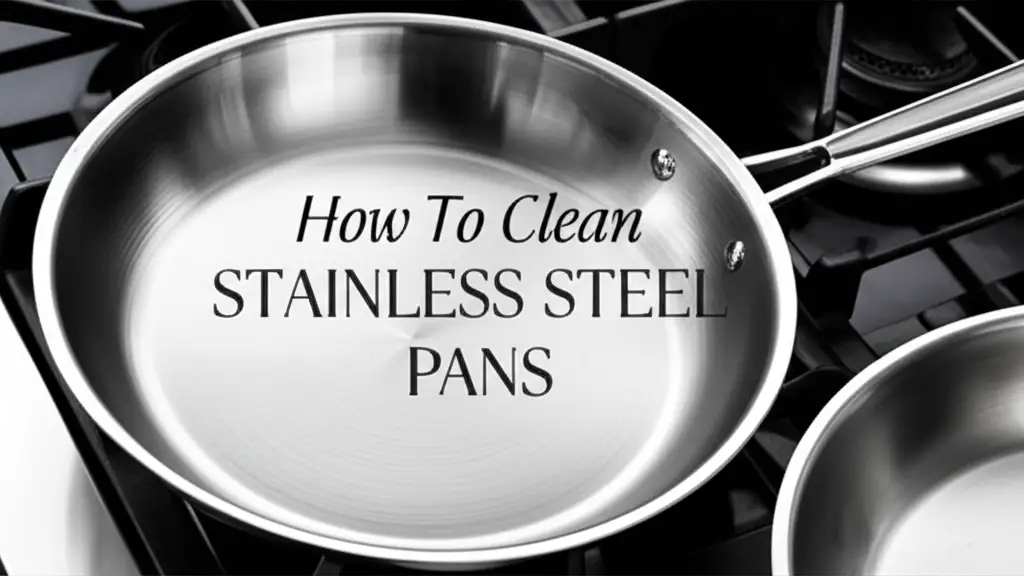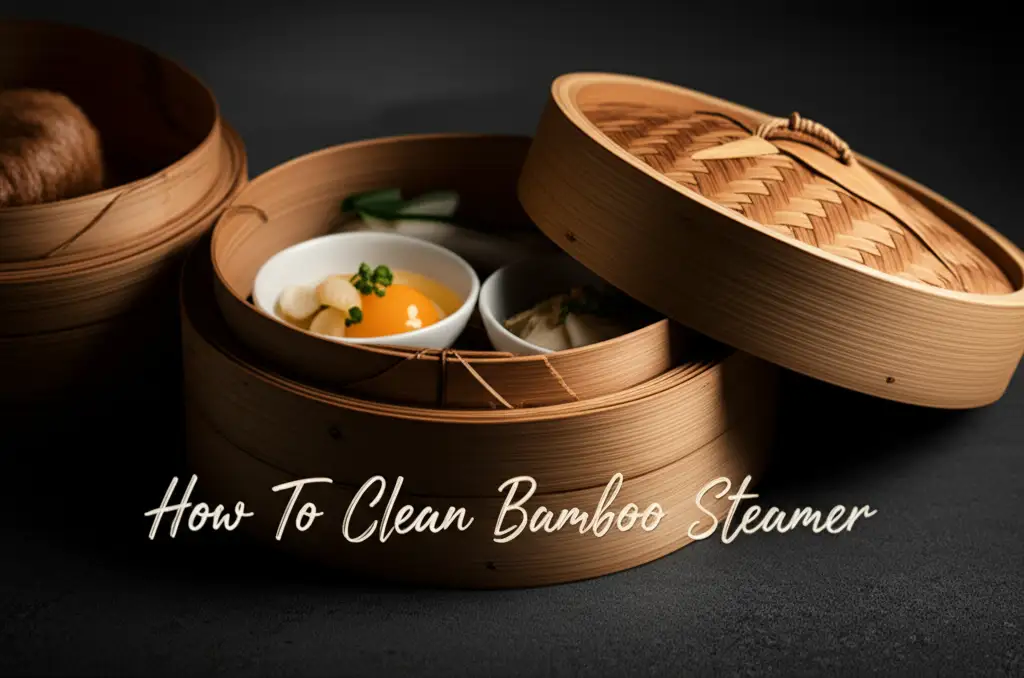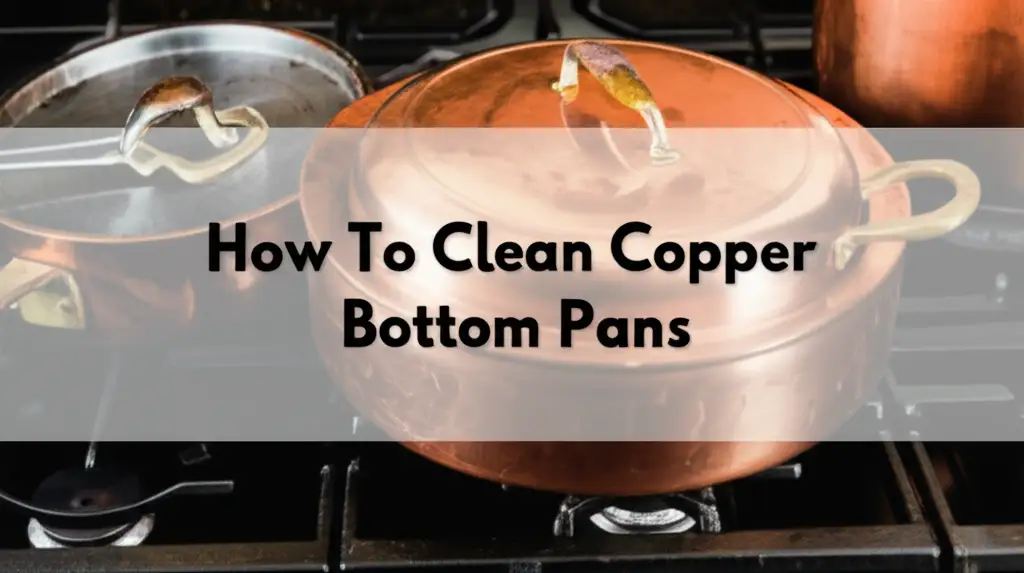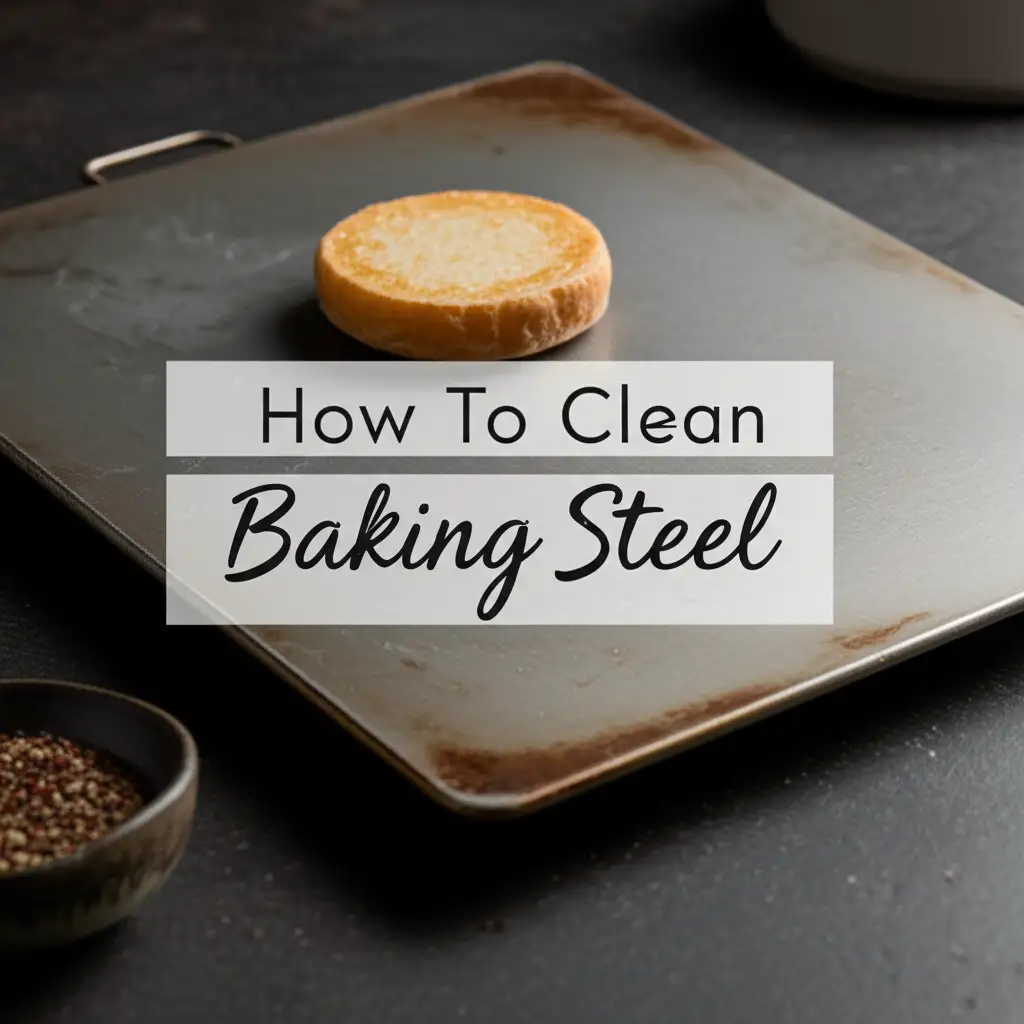· Kitchen Care · 14 min read
How To Clean All Clad Pan
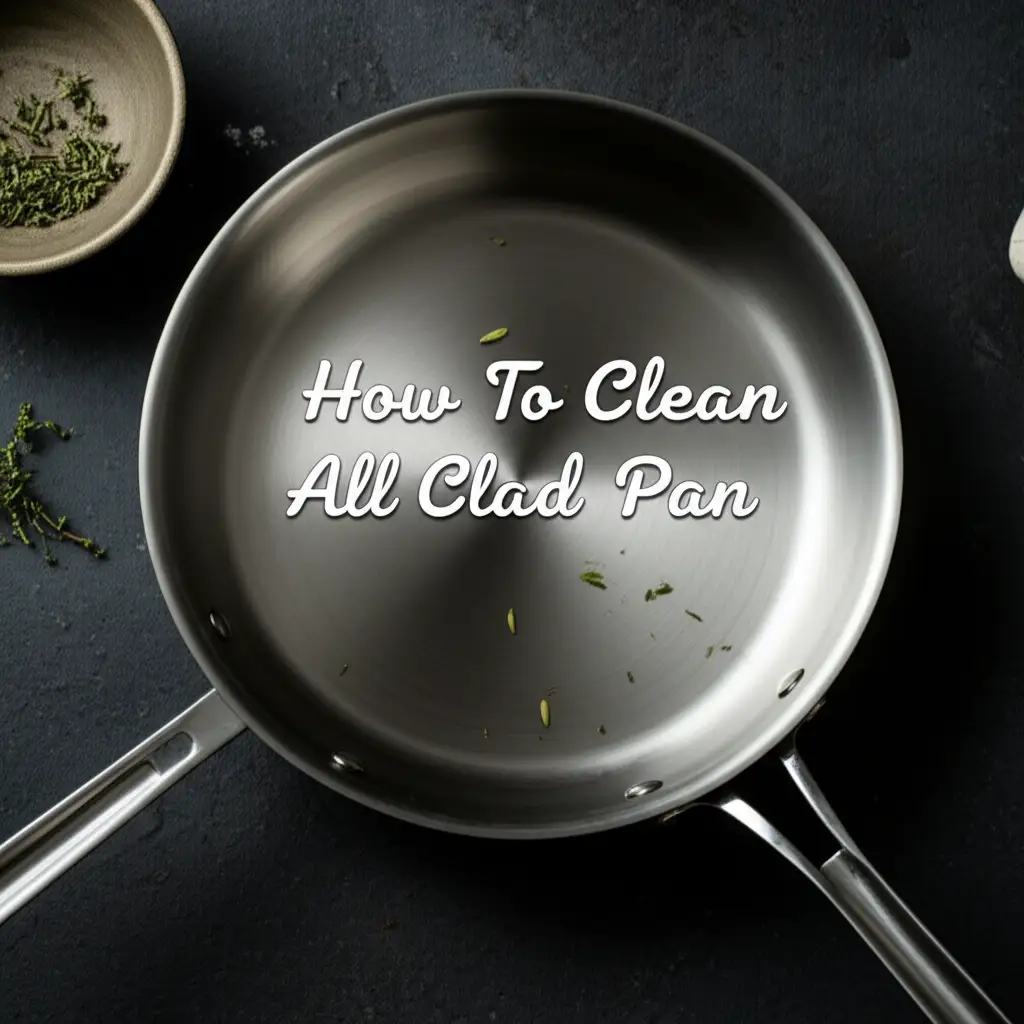
Restore Your All-Clad Pan’s Shine: A Cleaning Guide
Hello there! Do you own All-Clad pans? These pieces of cookware are a real investment. They cook food beautifully and last for many years. However, even the best pans can get dirty. Food sticks, oils burn, and sometimes a pan loses its shine. You want to keep your valuable All-Clad cookware looking new. This guide will show you how to clean All Clad pan models with simple, effective methods. We will cover everything from daily washing to tackling tough burnt stains. You will learn to maintain their beauty and performance for a lifetime of cooking.
Takeaway:
- Always clean your All-Clad pan after each use for best results.
- Use warm soapy water for daily cleaning.
- Baking soda and vinegar are powerful, natural cleaners for tough stains.
- Bar Keepers Friend restores shine and removes discoloration effectively.
- Avoid harsh abrasives or steel wool on the surface.
- Proper care extends the life and performance of your All-Clad cookware.
You clean an All-Clad pan by washing it with warm, soapy water after each use. For stubborn food or burnt spots, create a paste with baking soda and water or use a stainless steel cleaner like Bar Keepers Friend. Gently scrub and rinse to restore its shine.
Understanding Your All-Clad Cookware: The Basics
All-Clad is famous for its high-quality, multi-ply construction. Most All-Clad pans feature an outer layer of stainless steel. This material is durable and heats evenly. However, it can show stains, fingerprints, and discoloration if not cared for properly. Understanding the material helps you choose the right cleaning method.
Stainless steel is non-reactive, which means it will not leach flavors into your food. It is also very hygienic and easy to maintain. The multi-ply design often includes aluminum or copper cores. These cores improve heat distribution. Cleaning techniques focus on the stainless steel exterior. You want to avoid scratching the surface or causing permanent damage.
Many people think All-Clad is hard to clean. This is not true. It simply needs the right approach. Knowing what your pan is made of guides your cleaning choices. Proper understanding prevents mistakes that could shorten your pan’s life. Always check the specific care instructions that came with your pan.
These pans are built to last. With proper care, they will serve you well for decades. A little effort after each cooking session goes a long way. It ensures your investment continues to pay off in delicious meals.
Daily Cleaning Routines for Your All-Clad Pan
Keeping your All-Clad pan clean is easy with a consistent daily routine. This prevents food from hardening and stains from setting in. Always clean your pan after it cools down from cooking. Never plunge a hot pan into cold water. This can warp the metal and damage the pan.
Start by rinsing the pan with warm water. Remove any loose food particles. Then, add a few drops of dish soap to the pan. Use a soft sponge or a nylon scrubbing pad. Gently scrub the entire surface, inside and out. Pay attention to any areas where food touched the pan.
Rinse the pan thoroughly with warm water. Make sure all soap residue is gone. Soap left on the pan can cause discoloration when you heat it again. Dry the pan immediately with a clean towel. This prevents water spots, which are mineral deposits from your tap water.
A quick wash after each meal keeps your pan in top condition. It prevents the buildup of grease and food residue. This simple step makes future deep cleaning much easier. It also ensures your pan is ready for its next cooking task.
For minor sticking, fill the pan with a little warm water and let it sit for a few minutes. Then proceed with your normal cleaning. This softens the food, making it easier to wipe away. I always do this right after dinner.
Tackling Stubborn Food Residue on All-Clad Cookware
Sometimes, daily washing is not enough. You might find burnt-on food or stubborn residue stuck to your All-Clad pan. Do not panic! There are effective ways to remove these without damaging the pan. Avoid using harsh steel wool or abrasive cleaners at this stage. They can scratch the stainless steel surface.
One excellent method uses baking soda. Create a paste by mixing baking soda with a little water. Apply this paste directly to the affected areas. Let it sit for 15-20 minutes. The baking soda helps to lift the stuck-on food. After soaking, use a soft sponge or nylon brush to gently scrub the residue away. You will find that the food comes off much more easily. Rinse thoroughly with warm water afterwards.
For truly tough spots, you can combine this method with gentle heat. Fill the pan with about an inch of water and add a few tablespoons of baking soda. Bring the mixture to a simmer on the stovetop. Let it simmer for 10-15 minutes. This helps to loosen the burnt material. Then, carefully pour out the water and scrub the pan as usual. This method is surprisingly effective for common food stains.
Another effective product is Bar Keepers Friend. This cleaner is specifically designed for stainless steel. It contains oxalic acid, which helps to remove rust and discoloration. Sprinkle a small amount of Bar Keepers Friend on the pan. Add a little water to make a paste. Gently rub the paste into the affected area using a damp cloth or sponge. Rub in the direction of the metal’s grain. Rinse completely. This product works wonders on many types of stubborn residue.
Using these methods helps your pan look its best. It removes unsightly food stains and keeps the cooking surface smooth. Remember, patience is key. Do not rush the process or use too much force.
Removing Burnt Stains from Your All-Clad Pans
Burnt stains are a common problem for any cook. High heat or spilled food can leave dark, unsightly marks on your All-Clad pan. Fortunately, you can remove these burnt stains. Do not lose hope if your pan looks ruined. We can bring it back to life.
One of the best ways to tackle burnt stains is with a vinegar and baking soda combination. First, pour enough white vinegar into the pan to cover the burnt area. Bring the vinegar to a gentle simmer on the stove. Let it simmer for a few minutes. The heat helps to loosen the burnt residue. Carefully remove the pan from the heat and drain the vinegar.
Next, sprinkle a generous amount of baking soda over the burnt areas. The pan should still be warm. You will notice a fizzing reaction. This chemical reaction helps break down the burnt particles. Let it sit for 15-30 minutes. Then, use a nylon scrub brush or a non-abrasive sponge to scrub the stains. They should lift off with less effort. Rinse the pan well afterwards. This technique is often effective for how to clean burnt sugar from a pan and other common food burn situations.
For very stubborn, deep-set burnt oil or grease, you might need a more aggressive approach, but still a safe one. Consider using a stainless steel specific cleaner like Bar Keepers Friend more vigorously. You can also explore methods for how to clean burnt oil from stainless steel pan. Apply a paste of Bar Keepers Friend with a little water. Use a non-scratch scrubbing pad, like a Scotch-Brite Dobie pad. Scrub in small circular motions or follow the grain of the steel. This helps to lift away the most resistant burnt spots. Always rinse the pan completely to remove all cleaner residue.
Remember, patience and gentle scrubbing are better than harsh abrasion. Your pan will thank you for it by lasting longer and looking better.
Restoring Shine and Preventing Discoloration
All-Clad pans can develop a dull appearance or rainbow-colored stains over time. This discoloration, also known as “heat tint” or “oxidation,” is normal. It happens due to high heat and minerals in water. You can easily restore your pan’s brilliant shine and prevent future issues.
To remove existing discoloration and restore shine, Bar Keepers Friend is your best ally. It is a cleaning product made for stainless steel. It contains oxalic acid, which reacts with the oxidized layer. Sprinkle a small amount of Bar Keepers Friend powder onto the dry pan. Add a few drops of water to create a thin paste. Use a damp sponge or cloth to rub the paste over the entire surface of the pan. Rub in the direction of the metal’s grain. You will see the dullness or rainbow stains disappear. Rinse the pan thoroughly with warm water. Dry it immediately with a clean towel. This method also works well for the outside surface and bottom of the pan, helping you learn how to clean bottom of pan effectively.
To prevent discoloration, always heat your pan slowly. Avoid using very high heat when an empty pan is on the burner. Allow the pan to cool completely before washing it. Use soft water if possible, as hard water leaves mineral deposits. Always dry your pan immediately after washing. These steps help reduce the chances of stains forming.
Another tip is to avoid adding salt to cold water in your pan. Pitting can occur when salt crystals sit on the bottom of a cold stainless steel pan. This creates tiny corrosion spots. Add salt only after the water is boiling or when food is already in the pan. By following these steps, your All-Clad pans will maintain their beautiful, mirror-like finish.
Deep Cleaning Your All-Clad Pan: Beyond the Basics
Sometimes, your All-Clad pan needs more than a quick scrub. For heavy buildup, years of use, or accidental neglect, a deep clean can make your pan look almost new. This process involves a bit more time and effort, but the results are worth it.
Start with the methods mentioned for stubborn stains and burnt food. Use a combination of simmering water with baking soda or vinegar. This helps loosen large amounts of burnt-on food. After draining, apply a generous amount of Bar Keepers Friend. Create a thicker paste with less water. Spread it over the entire pan, inside and out. Let the paste sit for 5-10 minutes. This allows the oxalic acid to work its magic on deeply embedded grime and discoloration.
Use a non-scratch scrub pad, like a nylon mesh scrubber or a Dobie pad. Scrub the pan firmly but gently. Focus on areas with heavy buildup. Work in small sections. You might need to reapply Bar Keepers Friend for very tough spots. For the exterior and handles, a damp cloth with Bar Keepers Friend also works wonders. Be sure to scrub around rivets and handle attachments. These areas often collect grease.
After scrubbing, rinse the pan under warm running water. Ensure all cleaner residue is gone. Any cleaner left behind can cause problems when you next cook. Once rinsed, dry the pan completely with a clean towel. Inspect your pan under good light. If any spots remain, repeat the process on those specific areas. This deep cleaning process can refresh even the oldest All-Clad pans.
This deep cleaning ensures your pan performs its best. It removes any layers of cooked-on grime that might affect heat transfer. A clean pan also looks more inviting in your kitchen.
Care and Maintenance Tips for Long-Lasting All-Clad
Proper care and maintenance extend the life of your All-Clad pans. These are not just tools; they are investments in your kitchen. A few simple habits keep them performing beautifully for decades. Following these tips ensures your pans maintain their quality.
First, always preheat your pan properly. Stainless steel requires preheating to prevent food from sticking. Heat the empty pan over medium heat for 2-3 minutes. Test readiness by sprinkling a few drops of water. If they bead up and dance, the pan is ready. If they evaporate immediately, it is too hot. If they just sit there, it is not hot enough. This method helps create a non-stick-like surface.
Avoid using metal utensils that can scratch the pan’s surface. While All-Clad is durable, metal spatulas can cause minor scratches over time. Opt for silicone, wood, or heat-resistant plastic utensils. These materials are gentle on the stainless steel. Scratches are mostly cosmetic, but they can collect food particles.
Never use harsh chemical cleaners, oven cleaners, or steel wool on your All-Clad. These products can damage the finish, cause pitting, or leave chemical residues. Stick to the methods discussed in this article: dish soap, baking soda, vinegar, and Bar Keepers Friend. These are safe and effective.
Always allow your pan to cool before washing. Thermal shock from putting a hot pan into cold water can warp the pan. This warping affects how the pan sits on your stove. It also impacts heat distribution. A warped pan will not heat evenly.
Store your pans carefully. If stacking, place a cloth or paper towel between pans. This prevents scratches from pan rubbing against pan. Proper storage keeps your pans looking good and protected. By following these simple maintenance rules, your All-Clad cookware will remain a centerpiece in your kitchen for many years.
FAQ Section
Can I put my All-Clad pan in the dishwasher?
All-Clad states most of their stainless steel cookware is dishwasher safe. However, hand washing is highly recommended. Dishwashers can cause discoloration (heat tint) and dull the finish over time due to harsh detergents and high heat. Hand washing helps maintain the pan’s shine and longevity.
How do I remove rainbow-colored stains from my All-Clad pan?
Rainbow-colored stains, also known as heat tint, occur from overheating or mineral deposits. You can easily remove them using Bar Keepers Friend. Make a paste with a little water and rub it gently onto the affected area with a soft cloth or sponge. Rinse thoroughly and dry immediately.
Is it safe to use abrasive pads on my All-Clad pan?
It is best to avoid highly abrasive pads like steel wool. These can scratch the stainless steel surface. Instead, use non-scratch scouring pads, nylon brushes, or soft sponges. For tougher stains, Bar Keepers Friend with a non-abrasive pad is a safe and effective combination.
What causes “pitting” in my stainless steel pan?
Pitting appears as small, pin-sized holes in the pan’s surface. It occurs when salt crystals sit on the bottom of a cold stainless steel pan for too long. To prevent pitting, always add salt to water after it has come to a boil, or when food is already in the pan.
Can I use oven cleaner on my All-Clad pan for burnt-on messes?
No, never use oven cleaner on your All-Clad pan. Oven cleaners contain very harsh chemicals that can severely damage the stainless steel finish. They can cause discoloration, pitting, and even corrode the metal. Stick to methods like baking soda, vinegar, or Bar Keepers Friend.
My pan has a sticky residue that won’t come off. What should I do?
Sticky residue, often from cooking oils, can be tough. Try warming the pan gently on the stove. Add a few drops of dish soap and a little water, then scrub with a nylon pad. For very stubborn stickiness, a paste of baking soda and a small amount of oil (like vegetable oil) can sometimes help lift it.
Conclusion
Keeping your All-Clad pans clean is a straightforward process. You now have the tools and knowledge to tackle any mess. From daily washes to removing stubborn burnt stains, your All-Clad will look its best. Remember, consistent care protects your investment. Simple steps like hand washing and immediate drying prevent many common issues.
Your All-Clad pans are made for durability and performance. With the right cleaning methods, they will serve you well for a lifetime. Do not be afraid of a little burnt-on food. You can always restore that beautiful shine. A clean pan also cooks better and more evenly. Embrace these cleaning habits, and enjoy cooking with your pristine All-Clad cookware for many years to come. Your kitchen, and your meals, will thank you.
- All-Clad cleaning
- stainless steel cookware
- burnt food removal
- pan care
- kitchen cleaning

